Kayaking
"Are you ready to feel the rush of the water as you carve through waves on your kayak? Whether you're a seasoned pro or a beginner looking for a new outdoor adventure, kayaking is a thrilling and rewarding sport that allows you to explore rivers, lakes, and oceans in a whole new way. But where do you start? Here's everything (well, not everything) you need to know about the exciting world of kayaking."
Kayaking is a popular water sport that involves paddling a small, narrow boat known as a kayak through bodies of water. It can be a peaceful and relaxing way to take in nature, or it can be an intense and adrenaline-pumping activity, depending on the type of kayaking you choose.
One of the most popular forms of kayaking is whitewater kayaking, which involves navigating through rough, turbulent waters and tackling challenging rapids. This type of kayaking is often done in rivers and requires a high level of skill and experience. It's not for the faint of heart, but the thrill of riding the waves and navigating through choppy waters is unbeatable.
If you're just starting out in the world of kayaking, there are plenty of calmer options to choose from as well. Flatwater kayaking, also known as recreational kayaking, involves paddling through calm, still waters such as lakes or gentle rivers. It's a great way to get out on the water and enjoy the scenery at a leisurely pace.
No matter what type of kayaking you choose, there are a few key things you'll need to get started. A kayak, of course, is the most essential piece of equipment. There are several different types of kayaks to choose from, including sit-inside kayaks, sit-on-top kayaks, and inflatable kayaks. Each type has its own pros and cons, so it's important to do your research and choose the one that best fits your needs. You'll also need a paddle, a personal flotation device (PFD), and appropriate clothing and shoes for the weather and water conditions.
If you're new to kayaking, it's a good idea to take a lesson or two from a certified instructor to learn proper technique and safety procedures. There are also plenty of guided tours and rentals available at many popular kayaking destinations, so you can join a group and learn from experienced guides.
Whether you're looking for a relaxing way to spend a summer day or an intense outdoor challenge, kayaking has something for everyone. So why wait? Grab your gear and hit the water!
Here's some of our favorite kayaking areas
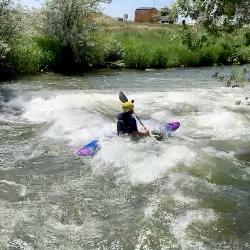
Groveland Wave
Blackfoot, Idaho
5.2 miles N of Blackfoot, IdahoWave in a canal located at Groveland. It's a great little spot to practice. ISU uses it for training beginning/intermediate whitewater kayaking, river safety and swiftwater rescue.
Kayak 13.8 mi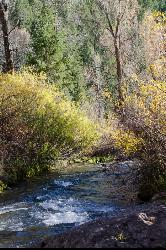
Big Elk Creek
Irwin, Idaho
11.0 miles SE of Irwin, IdahoBig Elk Creak Campground is a very versitile campground with plenty of activities to keep busy. Campgrounds are available, with three group sites that include picnic tables and campfire rings. There...
Backpack, Camp, Canoe, Hike, Horseback, Kayak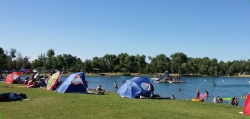
Jefferson County Lake (AKA Rigby Lake)
Rigby, Idaho
2.0 miles N of Rigby, IdahoRigby Lake has long been a favorite swimming hole for those in the area. The county has taken it well under its wing and made it a buzzing spot on any warm summer day. Along with the long standing...
Camp, Canoe, Dive, Kayak, Sled, Swim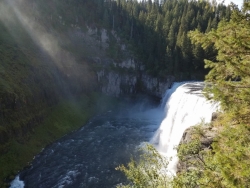
Mesa Falls
Ashton, Idaho
10.0 miles NE of Ashton, IdahoUpper Mesa Falls, aka Big Falls, is an absolutely awesome waterfall on the Henrys Fork of the Snake River. The falls drop 114 ft. and measure 300 ft. across. To get to the falls from the parking lot...
Cross-country Ski, Hike, Kayak 3.6 mi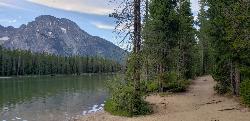
String Lake
Alta, Wyoming
16.4 miles NE of Alta, WyomingString Lake is a shallow lake that connects Leigh Lake and Jenny Lake at the base of Mount St. John and Rockchuck Peak. From the lakeshore, you can also take in beautiful views of Teewinot and Mt....
Canoe, Hike, Kayak, Swim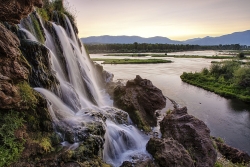
Fall Creek Falls
Swan Valley, Idaho
2.1 miles SW of Swan Valley, IdahoFalls Campground is located next to the Snake River near beautiful Swan Valley, only 45 miles east of Idaho Falls, Idaho. Mixed growth cottonwood trees provide partial shade, and grassy meadows with...
Camp, Cave, Hike, Kayak, Swim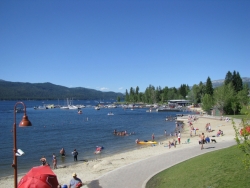
Mccall Area
McCall, Idaho
10.4 miles NE of McCall, IdahoMcCall is a beautiful resort town located in western Idaho, two hours north of Boise. It's feautures a multitude of activity of activities in both the Winter and Summer months, including:...
Backpack, Camp, Canoe, Cross-country Ski, Hike, Kayak, Mountain Bike, Sled, Snowshoe, Swim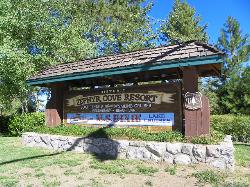
Zephyr Cove Park
Glenbrook, Nevada
5.5 miles S of Glenbrook, NevadaZephyr Cove Park is located 4.6 miles off highway 50 in Nevada. This park is a great place to have your summer activities; it includes Picnic tables for groups and couples, Barbecue...
Camp, Canoe, Disc Golf, Hike, Horseback, Kayak, Swim 1.4 mi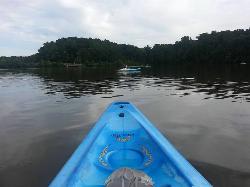
Queen Anne Creek
Edenton, North Carolina
0.2 miles W of Edenton, North CarolinaLocals in Edenton recommend Queen Anne Creek for great kayaking and canoeing. To begin this adventure park your car at the Roanoke River Lighthouse and head across the park to the...
Canoe, Kayak 17.5 mi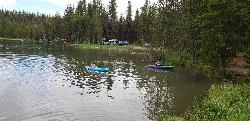
Tear Drop Lake
Ashton, Idaho
19.1 miles NE of Ashton, IdahoNestled in the Targhee National Forest just off of Ashton's Fish Creek Road, this tear drop shaped lake is a family adventure waiting to happen. The lake isn't very big but it is teeming with...
Camp, Canoe, Hike, Kayak, Mountain Bike, Swim- Plan Ahead and Prepare. Know the regulations and special concerns for the area you'll visit. Prepare for extreme weather, hazards, and emergencies. Schedule your trip to avoid times of high use. Visit in small groups when possible. Consider splitting larger groups into smaller groups. Repackage food to minimize waste. Use a map and compass to eliminate the use of marking paint, rock cairns or flagging.
- Travel & camp on durable surfaces. Durable surfaces include established trails and campsites, rock, gravel, dry grasses or snow. Protect riparian areas by camping at least 200 feet from lakes and streams. Good campsites are found, not made. Altering a site is not necessary.
- Dispose of waste properly. Pack it in, pack it out. Inspect your campsite and rest areas for trash or spilled foods. Pack out all trash, leftover food and litter. Deposit solid human waste in catholes dug 6 to 8 inches deep, at least 200 feet from water, camp and trails. Cover and disguise the cathole when finished. Pack out toilet paper and hygiene products. To wash yourself or your dishes, carry water 200 feet away from streams or lakes and use small amounts of biodegradable soap. Scatter strained dishwater.
- Leave what you find. Preserve the past: examine, but do not touch cultural or historic structures and artifacts. Leave rocks, plants and other natural objects as you find them. Avoid introducing or transporting non-native species. Do not build structures, furniture, or dig trenches.
- Minimize campfire impacts. Campfires can cause lasting impacts to the environment. Use a lightweight stove for cooking and enjoy a candle lantern for light. Where fires are permitted, use established fire rings, fire pans, or mound fires. Keep fires small. Only use sticks from the ground that can be broken by hand. Burn all wood and coals to ash, put out campfires completely, then scatter cool ashes.
- Respect wildlife. Observe wildlife from a distance. Do not follow or approach them. Never feed animals. Feeding wildlife damages their health, alters natural behaviors, and exposes them to predators and other dangers. Protect wildlife and your food by storing rations and trash securely. Control pets at all times, or leave them at home. Avoid wildlife during sensitive times: mating, nesting, raising young, or winter.
- Be considerate of other visitors. Respect other visitors and protect the quality of their experience. Be courteous. Yield to other users on the trail. Step to the downhill side of the trail when encountering pack stock. Take breaks and camp away from trails and other visitors. Let nature's sounds prevail. Avoid loud voices and noises.

















